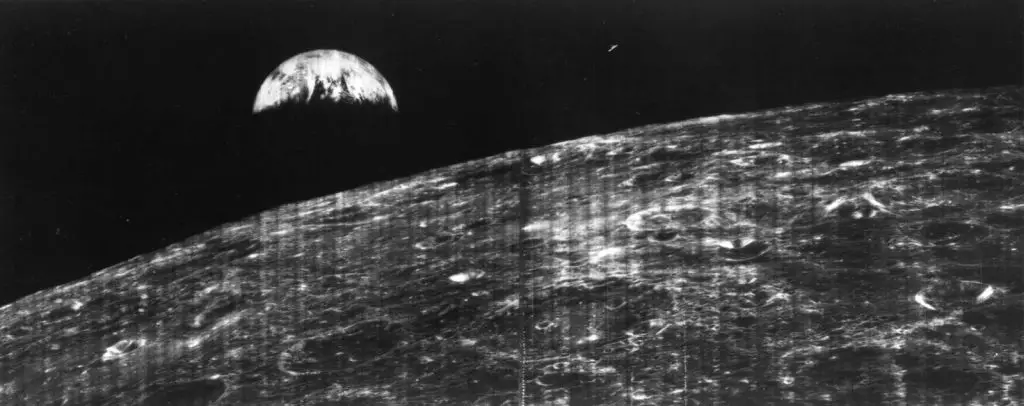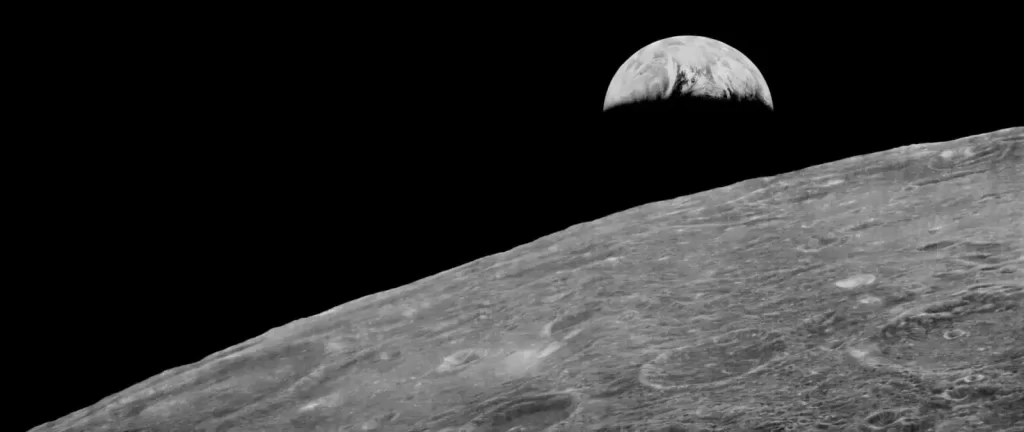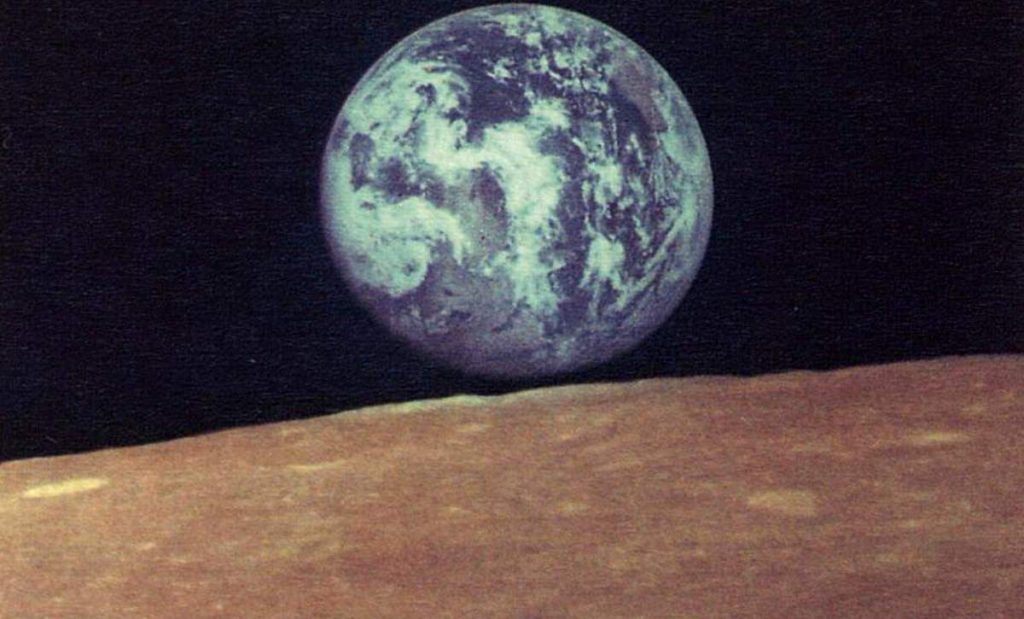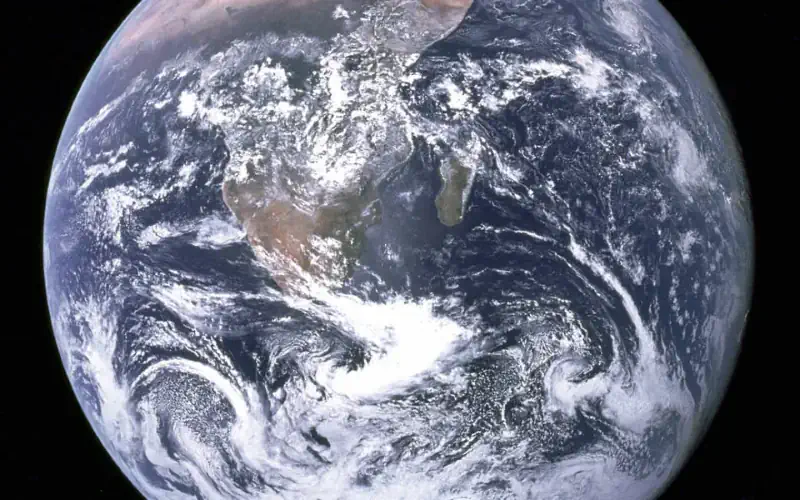On August 23, 1966, NASA’s Lunar Orbiter 1 robotic spacecraft took the first photograph of Earth from the Moon’s orbit.
Today’s (August 23) story of what happened this day in Science, Technology, Astronomy, and Space Exploration history.
Lunar Orbiter 1 takes the first photograph of Earth from the Moon’s orbit
Launched on August 10, 1966, from Cape Canaveral, the Lunar Orbiter 1 robotic spacecraft was part of NASA’s Lunar Orbiter program. It was the first spacecraft to orbit Moon. It entered lunar orbit on August 14, 1966.
The orbiter was designed primarily to photograph smooth areas of the lunar surface for selection and verification of safe landing sites for the Surveyor and Apollo missions.
On August 23, 1966, it took the first photograph of Earth from the Moon’s orbit. The photo below was the first photograph of Earth taken from the vicinity of the Moon.

Lunar Orbiter 1 was on its 16th orbit and just about to pass behind the Moon when this photo was taken. The spacecraft then transferred the photo to the NASA tracking station at Robledo De Chavela near Madrid, Spain.
The spacecraft took a second such image on August 25, so it took the first two photos of Earth from the Moon’s vicinity.
That image was digitally reprocessed by NASA’s Lunar Orbiter Image Recovery Project and the new version was released in 2008.

Until September 16, Lunar Orbiter 1 transferred a total of 229 images of the Moon (42 high-resolution and 187 medium-resolution photos) to the Earth. It took its last photograph of the Moon on August 28.
The spacecraft photographed all the planned potential Apollo landing sites, returning the highest resolution images of the Moon’s near and far sides to that time.
When its photography mission was completed, it continued to return radiation, micrometeoroid, and engineering data, and tracking of its orbit enabled a preliminary understanding of mass concentrations, or mascons, on the Moon that over time perturbed the spacecraft’s trajectory.
On October 29, with the spacecraft’s systems deteriorating and its fuel tanks nearly empty, ground controllers commanded Lunar Orbiter 1 to fire its engine to crash it onto the Moon on its 577th orbit. It impacted the far side of the Moon. Deorbiting prevented interference with future Lunar Orbiter spacecraft.
Lunar Orbiter Program
The Lunar Orbiter program was managed by NASA Langley Research Center and involved building and launching 5 spacecraft to the Moon at a total cost of $163 million.
- These 5 Lunar Orbiters which returned photography of 99% of the surface of the Moon (near and far side) with resolution down to 1 meter. Altogether the Orbiters returned 2,180 high resolution and 882 medium resolution frames.
- The micrometeoroid experiments recorded 22 impacts showing the average micrometeoroid flux near the Moon was about two orders of magnitude greater than in interplanetary space but slightly less than in the near-Earth environment.
- The radiation experiments confirmed that the design of Apollo hardware would protect the astronauts from average and greater-than-average short-term exposure to solar particle events.
- The use of Lunar Orbiters for tracking to evaluate the Manned Space Flight Network tracking stations and Apollo Orbit Determination Program was successful, with three Lunar Orbiters (2, 3, and 5) being tracked simultaneously from August to October 1967.
- The Lunar Orbiters were all eventually commanded to crash on the Moon before their attitude control gas ran out so they would not present navigational or communications hazards to later Apollo flights.
August 10 in Science, Technology, Astronomy, and Space Exploration history
- 1966: The first photograph of Earth from the Moon’s orbit was taken
- 2023: Anastatia Mayers became the youngest person to go to space
Sources
- Lunar Orbiter 1 on the NASA Solar System Exploration website
- Lunar Orbiter 1 on the NASA Space Science Data Coordinated Archive website
- “Lunar Orbiter 1 Launches to Survey the Moon” on the NASA website
- Lunar Orbiter 1 on Wikipedia
- Budget of NASA, Year by Year [1980-1989] - June 10, 2024
- Budget of NASA, Year by Year [1970-1979] - June 10, 2024
- Budget of NASA, Year by Year [1958-2024] - June 10, 2024


